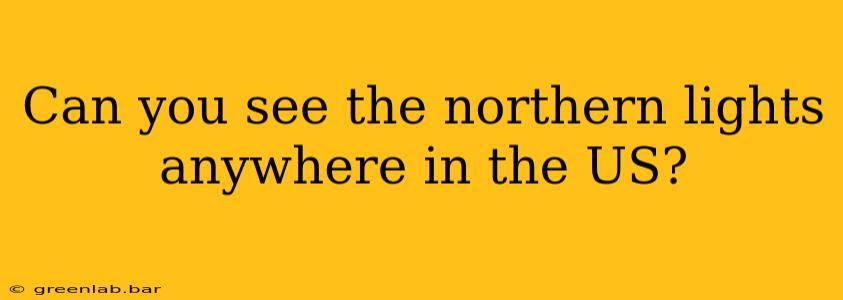The mesmerizing dance of the aurora borealis, the Northern Lights, is a spectacle many dream of witnessing. While often associated with far-flung destinations like Norway or Iceland, you might be surprised to learn that you can, under the right conditions, catch a glimpse of this celestial wonder in the United States! This guide explores the best locations and times to increase your chances of seeing the aurora in the US.
Where in the US Can You See the Northern Lights?
The key to seeing the aurora lies in understanding its geographic reach. The further north you go in the US, the better your chances become. While it's rare to see a vibrant display in lower latitudes, the northern states offer the best opportunities. Specifically, your best bet lies within these regions:
Alaska: Your Best Bet for Aurora Viewing
Alaska is undoubtedly the best place in the US to see the Northern Lights. Its high latitude and largely dark, open skies provide ideal viewing conditions. Locations like Fairbanks, often dubbed the "Aurora Capital of North America," offer excellent opportunities for aurora viewing, even boasting dedicated aurora viewing tours and lodges. Other Alaskan locations like Denali National Park, Anchorage, and the Arctic Circle offer stunning opportunities but might require more travel and preparation.
Other Northern States with Potential Aurora Sightings:
While less frequent than in Alaska, you might still be lucky enough to spot the aurora in these states:
- Maine: The northernmost parts of Maine, especially near the border with Canada, offer a chance, though sightings are infrequent and usually faint.
- North Dakota: Similar to Maine, sightings are sporadic and require ideal geomagnetic conditions and a very dark sky.
- Montana: Northern Montana, similar to North Dakota, offers a small chance, contingent upon strong auroral activity.
- Minnesota: The northern regions of Minnesota, particularly close to the Canadian border, offer a small possibility but are less favorable than Alaska or even the previously mentioned states.
When is the Best Time to See the Northern Lights in the US?
The best time to see the aurora anywhere is during the winter months, typically between September and April. This is because the nights are longer and darker, providing more opportunities for viewing. However, even within these months, you need the right conditions.
Key Factors for Aurora Viewing:
- Solar Activity: The aurora is caused by solar flares, so periods of high solar activity significantly increase your chances of a spectacular display. You can monitor space weather forecasts to predict aurora activity.
- Clear Skies: Cloud cover will completely obscure the aurora. Check weather forecasts before heading out to ensure a clear night.
- Darkness: The aurora is most visible in complete darkness, away from city lights. Light pollution significantly diminishes the visibility.
- Geographic Location: As previously mentioned, the further north you are, the better your chances.
Tips for Enhancing Your Northern Lights Viewing Experience:
- Get Away From City Lights: Find a location far from urban light pollution for the best viewing.
- Be Patient: The aurora can be unpredictable. Be prepared to spend time waiting, as displays can be fleeting.
- Dress Warmly: Winter nights in northern locations can be extremely cold. Dress in layers and bring warm accessories.
- Check Aurora Forecasts: Numerous websites and apps provide real-time aurora forecasts, helping you plan your viewing.
Seeing the Northern Lights in the US requires a combination of luck, planning, and patience. While Alaska provides the most reliable opportunity, even northern states have a chance of offering this incredible spectacle under the right circumstances. Remember to check weather and aurora forecasts to maximize your chances of witnessing this awe-inspiring natural phenomenon.

